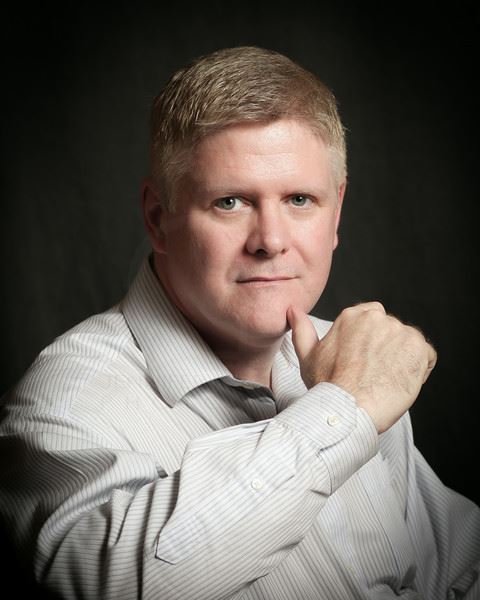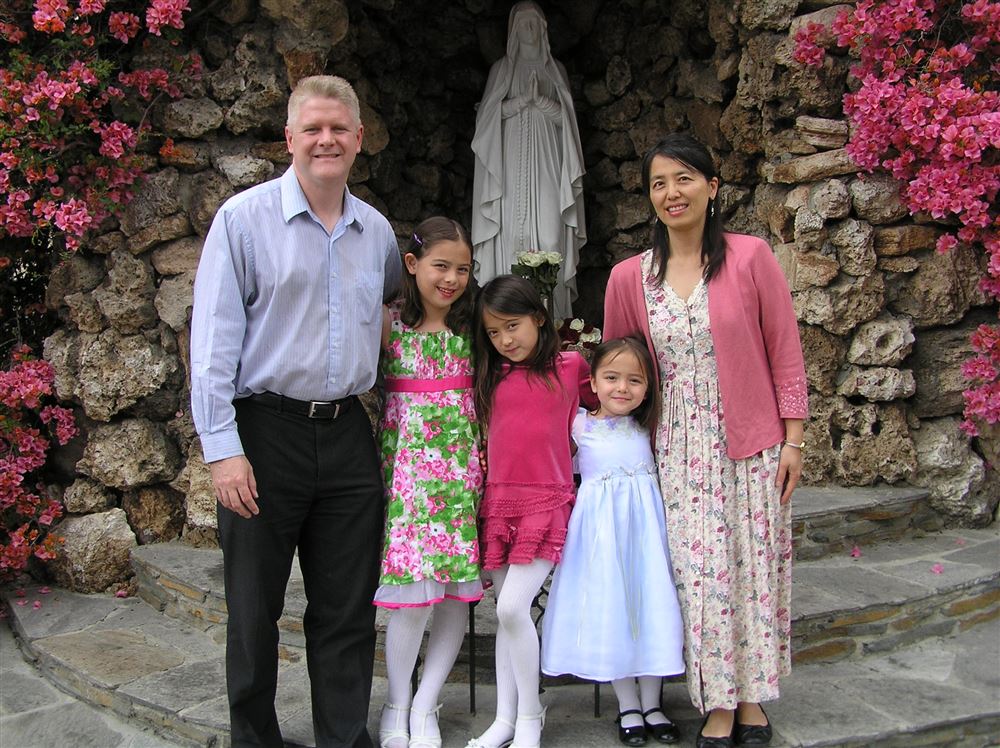Website Technical Chair
OSSC Fellow & President (2009-2010)
-Robert Cartland-
 Bob Cartland is an optical engineer and applied physicist with expertise in the design, fabrication and testing of optical components, photonic devices and optical systems. Bob earned a BA in Physics from Oberlin College and an MS in Electrical Engineering -Electrophysics from the University of Southern California with an emphasis on photonics. Bob Cartland is an optical engineer and applied physicist with expertise in the design, fabrication and testing of optical components, photonic devices and optical systems. Bob earned a BA in Physics from Oberlin College and an MS in Electrical Engineering -Electrophysics from the University of Southern California with an emphasis on photonics.
After graduating from Oberlin College, Bob worked as a Staff Scientist at EIC Laboratories in Norwood, Massachusetts, where he developed photoelectrochemical etching processes used for fabricating Echelle diffraction gratings, infrared mesh filters and x-ray gratings in semiconducting materials (GaAs, SiC and Si). At EIC labs, Bob developed and refined processes for optical grinding and polishing, photolithographic patterning and thin film coatings used for semiconductor optical device fabrication. At EIC Labs, Bob also prepared several SBIR proposals generating over a million dollars in funding.
Bob left EIC Labs to pursue graduate work at the University of Southern California in Los Angeles. At USC, Bob worked with Anupam Madhukar and Armand Tanguay developing, fabricating and testing strained III-V semiconductor (InGaAs/AlGaAs) multiple quantum well, asymmetric Fabry-Perot, spatial light modulators for use in optical neural networks. Bob optimized the modulator etalon design using thin-film analysis tools he developed using Mathematica combining layer propagation matrices and Kramers–Kronig relations to model electro-absorption based refractive index changes in the multiple quantum well region. Bob also grew the required distributed Bragg reflectors and multiple quantum wells using molecular beam epitaxy and processed the devices using photolithography, etching and thin-film deposition techniques. Bob developed the first photolithography process used at the USC Center for Photonics Technology Class 10 clean room and fabricated the first devices made in the facility. Bob developed a refined etching technique to tune and optimize the etalon wavelength for 980 nm operation. Bob also developed techniques to characterize the electrically biased spatial light modulator pixels using a tunable Ti-sapphire laser and Mitutoyo long working distance objectives and explored the efficiency of the resonance cavity devices as detectors. Bob set a world record for large, uniform arrays of high speed light modulators operating at 980 nm. Bob’s spatial light modulators and detector arrays were among the earliest devices successfully bonded to Si based CMOS control and readout integrated circuits (ROIC) using In bump flip-chip bonding. At USC, Bob also supported the fabrication and testing the first quantum dot lasers using InAs self-assembled quantum dots.
Following USC, Bob worked briefly for the Materials and Processes organization of Boeing Satellite Systems performing failure analysis on electronic components and materials and also serving as the limited shelf-life materials control point. After Boeing, Bob worked for several years as a Sr. Physics Engineer in the Optics and Lasers Department at Raytheon Space and Airborne Systems (SAS) in El Segundo, California. At Raytheon, Bob supported the development of thin-film optical components using the TFCalc thin-film analysis tool. Bob supported the development of numerous components including dichroic beam splitters and optical filters for use in space and airborne optical sensors. Bob’s designs include highly efficient dichroic beam splitter based on a cold mirror with simultaneous high visible light rejection and efficient transmission of an alignment laser.
At Raytheon, Bob also served for several years as the Technical Manager of the Scatter and Spectrophotometry Laboratory. In this role, Bob developed optical test systems and provided creative solutions for test and measurement problems involving light scatter measurement to determine BSDF (Bidirectional Scattering Distribution Function); spectrophotometric transmittance and reflectance measurement from 180 nm to 25 microns wavelength; and optical profilometry for surface roughness and dimensional analysis. Bob led or supported over one hundred characterization projects testing primarily optical but also electrical and mechanical materials, components and assemblies. Bob’s work at Raytheon included material and component qualification; radiation exposure, thermal cycling and humidity exposure studies; root cause failure analysis and the investigation of novel materials including SiC metamaterials, radome materials, SiC and Be optical components and various other materials operating in the ultraviolet through the far infrared wavelength regimes with the occasional X-ray and RF material or device. Bob also developed a technique to measure the transmittance of infrared lens assemblies used in a tactical airborne sensor. This technique allowed the comparative testing of hundreds of lens assemblies keeping a multi-million dollar production line in operation. Bob also developed a technique to measure interface scatter and reflectance using a hemisphere and modeled the system using thick lens analysis. This method was used to test several thermal optical interface materials for high power planar waveguide lasers.
While at Raytheon, Bob also first championed the implementation of a Finanium Supercontinuum (SC) laser (operating from 400 to 2500 nm) for scatter measurement. Bob used the SC laser to develop measurement techniques to quantitatively address optical cross-talk problems occurring in butcher block optical filter arrays in the Visible Infrared Imager Radiometer Suite (VIIRS) used on the NPOESS Preparatory Project weather satellite launched on October 28, 2011. Bob’s used his combined knowledge of optical scatter and thin-film materials to explain puzzling infrared scatter data from a VIIRS mirror that confounded the VIIRS Chief Engineer, a Raytheon scatter subject matter expert and two engineering fellows in the Optics and Lasers Department. Bob also used the supercontinuum laser to develop a non-destructive technique to measure the internal reflectance of a laser cavity using a modified integrating sphere theory to model the diffuse reflectance within the cavity. At Raytheon, Bob also served as the scatter measurement facility’s laser safety coordinator, preparing the lab’s safe operating procedure which was used as a standard template by the Raytheon SAS safety office and numerous laser labs. Bob also developed challenging laser safety eyewear for use with the 5 Watt supercontinuum source (400 to 2500 nm) combining two commercially available laser eyewear filters in series to provide the required broad band protection. Bob has also collaborated with NIST on several round robin laboratory investigations and the 2010 OSA Optical Thin-Films Measurement Problem where his scatter data were featured in the final presentation.
Bob has over 40 published papers and presentations including three “best in show” awards for his presentations at Raytheon internal technical symposiums. Bob is a member of the IEEE, The IEEE Photonics Society, the Optical Society (OSA) and the Optical Society of Southern California (OSSC). Bob established and served as President of the OSA Student Chapter while a graduate student at USC. The OSA student chapter meetings featured Milton Chang, USC Professor Alan Willner and a joint programming event with the OSSC including lab tours of USC and a presentation by USC Professor P. Daniel Dapkus. “best in show” awards for his presentations at Raytheon internal technical symposiums. Bob is a member of the IEEE, The IEEE Photonics Society, the Optical Society (OSA) and the Optical Society of Southern California (OSSC). Bob established and served as President of the OSA Student Chapter while a graduate student at USC. The OSA student chapter meetings featured Milton Chang, USC Professor Alan Willner and a joint programming event with the OSSC including lab tours of USC and a presentation by USC Professor P. Daniel Dapkus.
Bob has served the OSSC in numerous leadership positions. He is the current OSSC Website Chair and served as OSSC President in 2009-2010. Meetings during Bob’s term as President included: “Did the great Masters "Cheat" Using Optics?” by David Stork, “3-D Video Without Glasses” by Steve Hines, “Getting to Space for Less Cost” by SpaceX President Gwynne Shotwell and the 2010 OSSC LaserFest event (50th anniversary of the first working laser) which included over 180 attendees (a modern OSSC record). While OSSC President, Bob also led a complete revision of the OSSC website, including the implementation of online membership management, events management and payment processing.
Bob lives in Southern California with his wife Donna and three daughters.
Robert F. Cartland
626-485-4148
RobertCartland@att.net
|